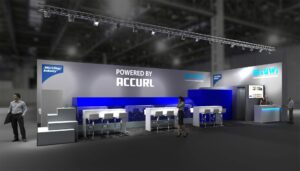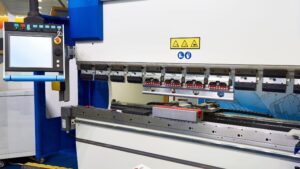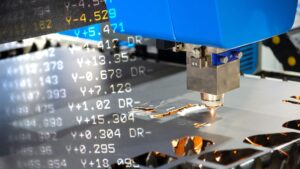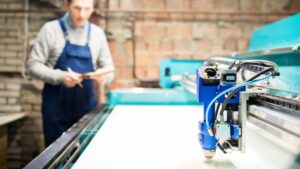The way we are in today’s time, each industry is heavily influenced by current technology. Thanks to the enormous advancement in recent times, every industry has received new tools and equipment that have helped achieve giant accomplishments and progress. As business owners, it becomes mandatory for you to know and stay up-to-date about these latest technologies to get the best out of them.
Therefore, if you are in the manufacturing industry or have a fabricator business, it is important for you to know about your current technologies and tools and how they operate. On that note, in this article, we will shift our focus to Servo-Electric Press Brakes. We will take our time to understand what these machines are and learn the working of a Servo-Electric Press Brake. Therefore, if you are ready, let us get learning!
What Is A Servo-Electric Press Brake?
An electric servo press brake is a type of electric press brake used in metal fabrication and bending operations. It combines the precision and power of a hydraulic press brake with the speed and efficiency of an electric servo motor.
Why Was Servo-Electric Press Brake Invented?
However, earlier models of press brake machines were prone to loud noises and required large consumption of energy in order to provide results. Due to rising concerns for nature and the critical need to save resources, better alternatives were needed that would offer the same or better results with minimum resource consumption and lesser contribution to pollution.
To meet up these expectations, the Servo-Electric Press Brake was invented. Accurl’s new models of servo presses operates on electricity, with no hydraulic support, and offers various advanced features. Thus, these are more eco-friendly, offer more accuracy and precision, and require less energy consumption.
Also, it helps reduce the production costs, as it is easy to operate, requires no out-of-the-way maintenance, and has features that help provide faster and accurate products.
How Does A Servo-Electric Press Brake Work?
Now that we have a fair idea of what a Servo-Electric Press Brake is, we shall now move on to understanding the operations behind it. It is important to learn how a machine operates because that way, you will know how to utilize the machine efficiently and to its full potential.
Also, it will help you take care of the machine better to get long-term results. Therefore, let us take our time to understand the Servo-Electric Press Brake Working.
Usually, press brake machines have two main components whose movements bring about the desired results — the die and the punch. In some models, the die is fixed, whereas the punch is movable, whereas in other models the punch is fixed, and the die is made to move against it.
In either of the systems, the movable part is fueled by the energy and pressed against the fixed part with the desired metal or material in between the two. The die can be changed and fitted with various angles and shapes to bring about the desired manipulation on the metal.
In Accurl’s Electro Servo Press Brake, the movable part is fueled by electricity instead of hydraulic pressure, as in the traditional models. That is, the movable parts are fitted with two servo motors that generate the power to push it down against the fixed part, thus producing the desired effect.
There are several pulley systems attached to the servo motors that help distribute the pressure evenly along the length of the material so that accurate and precise bending takes place.
Additionally, Servo-Electric Press Brakes, like Accurl’s CNC Press Brake EURO PRO 4 ~ 6-Axis, have in-built CNC systems attached to them that help make precision bends and manipulation to the material. A CNC system (Computer Numerically Control System) is a system that allows you to feed your machine with the necessary adjustments you need on your material, and it will help direct the machine to give you the precise result.
CNC systems do not require you to manually handle the machine and yet give you extremely accurate and precise results. So, the way the process works is you feed in the necessary details in the CNC system.
The CNC system understands it and forwards the information to the machine and the servo motors, which then start applying the energy which makes the machine move in the desired manner. Hence, you get your desired manipulation and bends in your machine.
What are the Different Types of Servo Press Brakes?
There are 2 main types of servo press brakes. Lets explore them and mention few major applications for each one.
Electric-Hybrid Servo Press Brakes
A hybrid servo press brake combines hydraulic and electric servo systems to operate. The hydraulic system provides power for heavier loads, while the electric servo system provides precision control and faster operation for lighter loads. They are:r
- Ideal for manufacturing and fabrication of heavy-duty metal components
- Suitable for a wide range of applications, including automotive, aerospace, construction, and more
- Used for bending, forming, and shaping sheet metal into various angles and shapes
- Suitable for medium- to high-volume production runs
- Can handle thicker and heavier materials than full servo-electric machines
Full Servo-Electric Press Brakes
These machines use only servo motors to operate, eliminating the need for a hydraulic system altogether. They are highly precise and offer superior energy efficiency, making them a popular choice in modern manufacturing. Full servo-electric press brakes are ideal for:
- High-precision applications and high-volume production
- Wide range of applications, including electronics, medical devices, and precision components
- Bending, forming, and shaping sheet metal into various angles and shapes
- Superior accuracy and precision, making it suitable for complex geometries and intricate designs
- Working with thinner materials with high precision and minimal distortion.
Both electric-hybrid and full servo-electric press brakes offer advanced features that make them an excellent investment for businesses seeking to improve their manufacturing process. Depending on the specific needs and applications, either type can be a suitable option for businesses in the manufacturing and fabrication industry.
What are the Advantages of Servo-Electric Press Brake?
We have now understood what press brake machines are, what Servo-Electric Press Brake machines are, and how they operate. While we are on the topic, we would like to shed some light on why Servo-Electric Press Brake machines are the talk of the market.
If you are opting to invest in it, you should know why doing so will help your business. While there are different types of press brakes out there, including the traditional hydraulic press brakes and innovative hybrid models, Servo-Electric Press Brakes, such as Accurl’s Servo Electrical CNC Press Brake eB Icon Series, are strongly recommended. Here are a few reasons why:
Less Power Consumption
First and foremost, Servo-Electric Press Brakes consume less energy as compared to traditional models. While Servo-Electric Press Brake does consume double the amount of energy to produce the same result as a hydraulic press brake, hydraulic press brakes need to run the entire day to be operational.
While Servo-Electric Press Brakes only need to run when needed. This naturally makes Servo-Electric Press Brake a better alternative as it consumes lesser power and has higher efficiency.
High Accuracy And Speed
Servo-Electric Press Brakes are naturally more accurate than other types of press brake machines. According to experts, Servo-Electric Press Brakes are accurate up to 1 micron while hydraulic press brakes are accurate up to 10.16 microns.
As for speed, Servo-Electric Press Brake has higher pending power and has faster output speed as compared to other traditional press brakes, making it the desirable alternative.
Smarter Alternatives
Servo-Electric Press Brakes are equipped with smart features, AI, and CNC systems that make it the smarter alternative. Therefore, you do not just get efficiency; you also get higher accuracy, better productivity with minimal input, and top-class results as compared to traditional press brakes.
Sustainable And Environmental Friendly
As businesses of modern times, it is your duty and responsibility to think about sustainability and preservation of natural resources. Servo-Electric Press Brakes are better alternatives in this case because, as mentioned earlier, they consume less energy and contribute less to pollution.
Servo and hybrid press brakes are fuel-efficient and are comparatively quieter while functioning, which does not add to noise pollution. While traditional press brakes may be prone to oil leaks and spills, such factors are not a matter for Servo-Electric Press Brake, which adds to its eco-friendliness.
Economical
Last but not least, Servo-Electric Press Brakes are far more economical than their other counterparts. While hydraulic press brakes have higher maintenance costs due to frequent changes in oil, fluids, and filters and more managing seals and leaks, Servo-Electric Press Brakes are very economical.
Therefore, if you are wondering why you should invest in a Servo-Electric Press Brake, these are the precise reasons why it is a very good investment both in the short and long term.
So, that is all there is to know about Servo-Electric Press Brakes, how they operate and why they are the better alternative to their traditional counterparts.
How does electric press brakes compare to hydraulic ones?
While both types of machines are effective, they have some distinctive traits. Understanding the differences between electric and hydraulic press brakes can help businesses choose the right machine for their specific needs and applications.
Some of the main ones are:
- Power Source: Electric press brakes use electricity to power servo motors, while hydraulic press brakes use oil to power hydraulic cylinders.
- Energy Efficiency: Electric press brakes consume less energy and are more efficient than hydraulic press brakes, which can save on operating costs.
- Noise: Electric press brakes are quieter than hydraulic press brakes, reducing noise pollution in the workplace.
- Maintenance: Hydraulic press brakes require more maintenance than electric press brakes, including oil changes and filter replacements.
- Speed: Electric press brakes offer faster operation than hydraulic press brakes, increasing productivity.
- Precision: Electric press brakes offer higher precision and accuracy than hydraulic press brakes, allowing for more complex geometries and intricate designs.
Bottom Line
In conclusion, we can state that the Servo-Electric Press Brake offers eco-friendly features, reduced energy consumption, and superior accuracy and precision. The machine operates by using servo motors to press the metal sheet against a fixed part, producing the desired effect. Its built-in CNC system allows for precise manipulation of the metal sheet with minimal human input.
The Servo-Electric Press Brake is a smart, sustainable, and economical alternative to traditional press brake machines.






